Perfumer’s Workbench: Decoding Olfactory Cognition – The Neuroscience of Scent Creation & Perception
Mapping the Neural Pathways of Fragrance Experience to Revolutionize Formulation Strategy, Consumer Engagement & Creative Validation
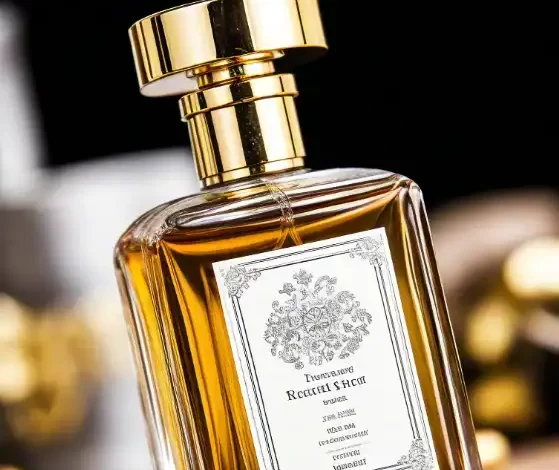
Abstract: This analysis positions the Perfumer’s Workbench as the essential neuroscience hub for fragrance creation – moving beyond chemistry to model the bio-cognitive architecture of scent perception. We explore how integrating neuroscientific principles, psychophysical models, and biometric data transforms fragrance development from empirical artistry into predictive neuro-design. Discover how leading innovators leverage olfactory cognition mapping to optimize hedonic impact, predict cross-modal integration, overcome sensory fatigue, and create neurologically validated masterpieces with quantifiable consumer resonance.
Body Content:
While fragrance formulation addresses molecular interactions, true success lies in mastering the brain’s intricate processing of scent – a complex neural symphony involving primal limbic reactions, cortical decoding, and profound cross-sensory integration. The modern Perfumer’s Workbench transcends chemical databases, evolving into a sophisticated olfactory cognition modeling platform that deciphers the biological underpinnings of scent perception. This transforms perfumery from a craft of compositional aesthetics into a science of predictable neurological impact.
The Neurobiology Bottleneck in Traditional Perfumery
Traditional approaches face critical blind spots rooted in unmodeled brain function:
- The Hedonic Imperative: Liking ≠ Pleasure. Pleasure activation (dopaminergic pathways) differs significantly from conscious preference (orbitofrontal cortex activity), with implications for fine fragrance vs. functional product design.
- Cognitive Fatigue Dynamics: Olfactory bulb inhibition and receptor adaptation rates vary drastically across molecule types, rendering some accords “neurologically fragile” despite initial impact.
- Emotional vs. Descriptive Coding: Amygdala responses evoke emotion before olfactory cortex assigns descriptors – yet evaluator panels primarily verbalize the latter.
- Cross-Modal Contamination: Auditory (packaging sounds), visual (color/branding), and tactile (texture) stimuli fundamentally alter olfactory cortex processing in unpredictable ways.
- Memory Reconsolidation: Fragrance-evoked memories aren’t retrieved but actively reconstructed each time, creating potent yet unstable emotional hooks.
Without mapping these mechanisms, perfumers navigate a “black box” of perception. The Workbench integrates cognitive neuroscience to illuminate this box.
Pillars of Olfactory Cognition Modeling on the Workbench
The advanced Workbench integrates diverse neuroscientific frameworks:
-
Psychophysical Threshold Mapping (Quantifying Perception):
- Individual Odorant Profiling: Beyond smell, cataloging quantitative detection thresholds, recognition thresholds, supra-threshold intensity curves (Steven’s Power Law), and adaptation/recovery kinetics for each material.
- Blend Interaction Models: Algorithmically predicting how combination alters individual detection thresholds via mixture suppression/amplification (e.g., predicting when sandalwood masks labdanum’s detection threshold).
- Temporal Dynamics Engine: Modeling the changing neural representation intensity and quality over time (minutes to hours) based on material vapor pressure, receptor binding affinity, and bulbar processing latency.
-
Limbic & Emotional Impact Mapping (The Subconscious Engine):
- Affective Priming Database: Assigning materials/accords empirically derived valence/arousal scores via facial EMG, EEG asymmetry (frontal alpha), and implicit association tests.
- Autonomic Response Prediction: Correlating material properties with predictable physiological responses – skin conductance (arousal), heart rate variability (relaxation/stress), pupil dilation (attention).
- Neuro-Aesthetic Models: Quantifying the neural “peak shift” response (enhanced reward activation for exaggerated prototype features) to guide boldness in gourmand or citrus structures.
-
Cortical Semantic & Memory Modeling (Conscious Experience):
- Descriptor-Semantic Network: Building neural network models linking molecular features (functional groups, carbon chain length) not just to odor descriptors (e.g., “woody”), but to associated semantic concepts (“warmth,” “luxury,” “clean”) via corpus linguistics and neural embedding models.
- Episodic Memory Activation Index: Cataloging materials empirically linked to autobiographical memory recall strength and valence across demographics using EEG signature analysis (P600 modulation).
- Fatigue Prediction Algorithms: Modeling receptor depletion kinetics and bulbar inhibitory feedback loops to predict hedonic decline timelines for specific accords.
-
Cross-Modal Integration Engine (Beyond the Nose):
- Sound-Scent Congruence Models: Quantifying how specific auditory frequencies (e.g., packaging clicks, brand jingles) modulate odor intensity and pleasantness via olfacto-auditory cortical integration (superior temporal gyrus).
- Visual-Olfactory Binding Tools: Predicting how color wavelengths (e.g., blue vs. red), bottle shapes (round vs. angular), and branding fonts trigger scent expectation biases that alter perceptual fidelity.
- Haptic-Olfactory Interfaces: Modeling how material textures (glass frost, plastic smoothness) create tactile priming effects impacting perceived scent diffusion and richness.
Workbench Neuro-Tools: Bridging Brain & Bottle
Integrating this cognitive architecture enables revolutionary functionality:
- Predictive Hedonic Profiling: Simulating expected nucleus accumbens activation (core pleasure response) for prototype formulas in silico before synthesis.
- Cognitive Durability Optimization: Identifying unstable neuron-odorant pairings prone to rapid fatigue, suggesting neuro-resilient alternatives preserving impact longevity.
- Emotion-Targeted Formulation: Engineering formulas designed to precisely activate target limbic circuits (e.g., ventral tegmental area for comfort, amygdala for intensity).
- Memory Leverage Design: Structuring accords using materials with high autobiographical index scores for key demographics to potentiate nostalgia.
- Cross-Modal Harmony Assurance: Pre-optimizing fragrance structure to align with known brand sonic signatures, packaging visuals, and application textures.
- Cognitive Load Minimization: Identifying perceptually “over-cluttered” formulations causing excessive prefrontal cortex effort (low liking) vs. “harmonic blends” inducing fluent processing (high liking).
Validation Through Neurometrics: Beyond Panels to Brain Scans
The Workbench integrates biometric validation tools:
- EEG Integration: Capturing real-time cortical engagement (Event-Related Potentials like N1/P3), emotional valence (asymmetry), and cognitive load during evaluation.
- fNIRS (Functional Near-Infrared Spectroscopy): Measuring prefrontal cortex and orbitofrontal activation linked to decision-making and preference during fragrance trials.
- Galvanic Skin Response (GSR) & Heart Rate Monitoring: Quantifying subconscious arousal responses complementing verbal feedback.
- Eye-Tracking: Gauging visual attention to specific descriptors or imagery triggered by scent exposure.
- Automated Facial Coding: Objectively measuring micro-expressions (e.g., nose wrinkling for disgust, subtle smiles for pleasure) during smelling.
Strategic Neuro-Perfumery Advantage:
Mastering olfactory cognition delivers unparalleled competitive leverage:
- Hedonic Precision Engineering: Consistently crafting fragrances with scientifically predicted high reward pathway activation for target consumers.
- Cognitive Fatigue Resistance: Formulations maintaining perceptual integrity and appeal significantly longer than competitors.
- Authentic Emotional Resonance: Creating scents with validated limbic impact matching intended brand sentiment.
- Memory Dominance: Fragrances optimized for high recall and potent positive associative strength.
- Multisensory Synergy: Fragrances pre-tuned to thrive within the client’s complete sensory ecosystem (packaging, application, sound).
- Consumer Neuroscience Validation: Irrefutable biometric data demonstrating neurological effectiveness during pitches and claim support.
- Generational Olfactory Mapping: Building demographic-specific neuro-cognitive profiles to predict scent preferences across ages and cultures.
The Frontier: Brain-Computer Interface (BCI) & Generative Neuro-Design
Emerging integrations will further revolutionize the craft:
- Passive BCI for Evaluation: Perfumers wearing EEG headsets to visualize neural responses while creating/juxtaposing accords.
- Generative Adversarial Networks (GANs) for Limbic Targets: AI trained on biometric data generating novel molecules/accords optimized for specific brain region activation patterns.
- Closed-Loop Perfumery: Real-time fMRI feedback adapting fragrance diffusion to maintain desired brain state during experiential testing.
- Personal Olfactory Fingerprinting: Using genetics & cognitive profiles to predict individual receptor binding efficiencies and neural processing biases.
- Neuro-AI Creative Partners: LLMs trained on cognitive science literature suggesting formulas targeting specific neuro-emotional states (e.g., “Generate an accord inducing focused calm”).


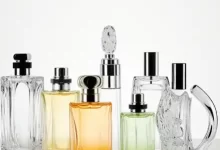

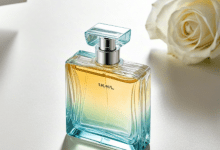
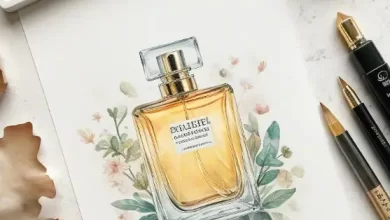
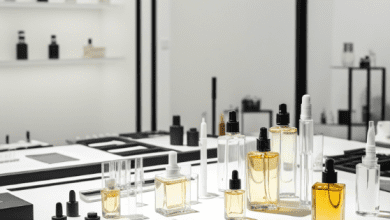


Fascinating read! Never realized how much neuroscience goes into fragrance design. Mind blown 🤯
Fascinating stuff! Makes me appreciate my signature scent even more knowing the science behind it.
This explains why some perfumes give me instant headaches while others feel comforting. Our brains are weird.
As a chemistry student, I never considered the neural processing aspect. Makes me want to switch to neuroscience!
So basically, my favorite perfume is just hacking my brain? Cool.
The cross-modal contamination part is eye-opening. No wonder I judge perfumes differently when I see the bottle first.
Can we get a TLDR? This is too technical for my morning coffee reading.
Coffee first, then I’ll try reading this again. Too early for neuroscience!
This makes me appreciate perfumers even more. It’s literally brain science AND art!
Interesting, but how much of this is actually applied in commercial perfumery? Sounds expensive to implement.
The memory reconstruction part explains why my grandma’s perfume suddenly smelled different after she passed away 😢
Neuroscience meets perfumery? Count me in! Where can I learn more about this field?
Fascinating how scent memories literally rewrite themselves each time we smell something. Explains why childhood smells hit differently as adults.
This is why I can’t stand floral perfumes even though everyone says they’re ‘pleasant’ – my brain just processes them as headaches!
The science behind why some perfumes smell amazing in store but terrible by lunchtime! Now it makes sense.
So that’s why testers never smell the same at home! The store environment totally messes with perception.
So that’s why expensive perfumes last longer – it’s not just the oils but how they interact with our olfactory receptors. Mind blown 🤯
Not just expensive perfumes – it’s about the molecular structure and brain interaction. Great point!
As a neuroscience student, I can confirm this is cutting-edge research. The limbic system reactions are particularly fascinating!
This explains why I always associate certain scents with specific memories, even if I can’t verbalize why. Our brains are wild.
Would love to see more practical applications of this research. Maybe customizable perfumes based on brain scans someday?
The part about packaging influencing scent perception is so true! I always judge books by their covers with perfumes.
I always knew fancy packaging made perfumes smell better to me! Science proves I’m not just being superficial 😂
Not gonna lie, most of this went over my head. But I appreciate that there’s actual science behind why some smells just ‘click’
The technical stuff is complex, but the real-world implications are crystal clear – our noses lie to us all the time!
The future of perfumery is here and it’s equal parts art and hard science. Can’t wait to see what comes next!
Would be amazing to see personalized perfumes based on individual brain responses. The future is now!
Fascinating read! The neuroscience behind scent perception makes so much sense now. Our brains are truly amazing.
The part about memory reconsolidation blew my mind! No wonder certain scents trigger such vivid childhood memories.
As someone who gets migraines from strong perfumes, this explains so much about how my brain processes scents differently.
Would love to see how this research gets applied in commercial perfumery. Will it make designer perfumes more affordable?
Interesting, but how does this help me pick a signature scent? Need more practical applications!
The cross-modal contamination section was eye-opening. No wonder testers in pretty bottles always smell better.
This makes me want to study neuroscience just to understand my favorite perfumes better!
Wow, this is next-level stuff! Never thought about how much neuroscience goes into making perfumes. Makes me appreciate my favorite scent even more.
The part about memory reconstruction is fascinating. Explains why certain smells instantly take me back to childhood!
Too much scientific jargon for me. Could really use some real-world examples to make this more relatable.
This explains why I hate floral scents – my brain must process them differently. Finally some scientific validation!
As a psychology major, I find the limbic system reactions particularly interesting. Great intersection of science and art!
So basically perfumers are brain hackers now? Cool.
The packaging influence part is so true! I always judge perfumes by their bottles first 🤦♀️
Not sure I understood all the technical details, but the basic idea of how scents affect our brains is really cool!
Would love to see how this research changes mainstream perfumery. Maybe more personalized scents in the future?
Wow, the neuroscience behind scent perception is mind-blowing! Never thought perfumery was this scientific.
The part about memory reconstruction hits home. Certain scents instantly transport me back to childhood summers at grandma’s house.
This explains why I can’t stand floral perfumes – my brain must process them as threats rather than pleasures!